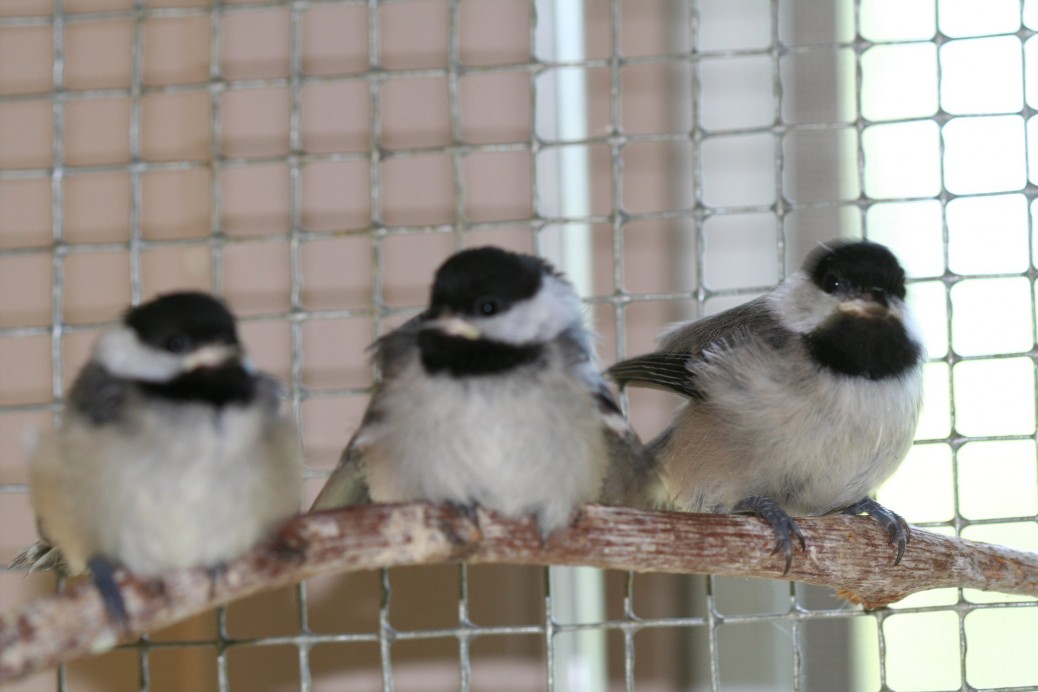Chickadees

These chickadees seem to tolerate Roanoke winters quite well, as they are permanent residents. They can often be spotted foraging amid snow-covered branches, as greeting cards so beautifully illustrate. During the winter, they enjoy seed and suet in addition to whatever small invertebrates they find. In the summer, they consume insects and larvae in much greater quantities, as well as some fruit.
Chickadees are gregarious. They flock with other chickadees as well as other bird species, especially in the winter. Chickadees have a flock hierarchy, and during the breeding season only the dominant birds nest within the flock’s territory.
Carolina Chickadees nest in cavities. They lay 3 – 10 eggs. Like all passerines, the hatchlings are altricial (completely helpless). During rehab, chickadees are often kept with other chickadees or other small birds, such as bluebirds. They remain in a small cage until they are comfortable flying.
Favorite “recovery food:” Waxworms!
Source: Cornell Lab of Ornithology http://